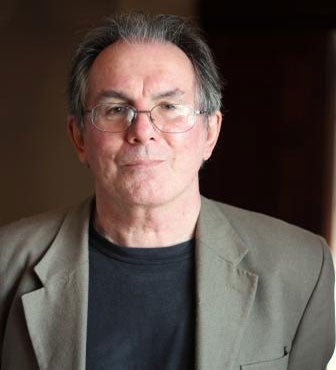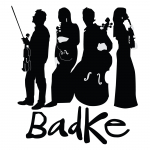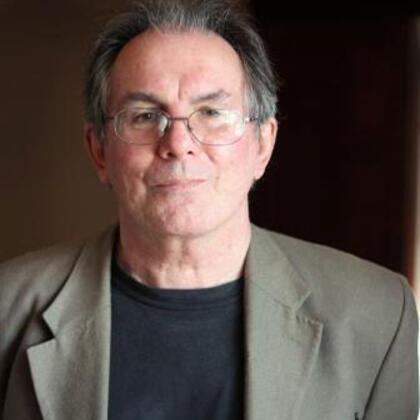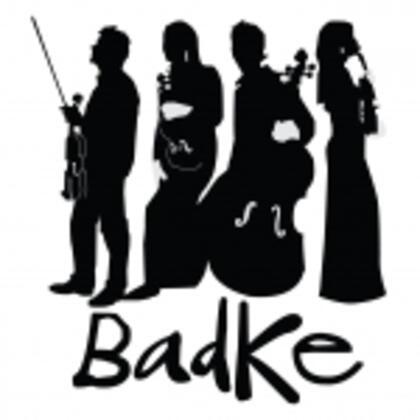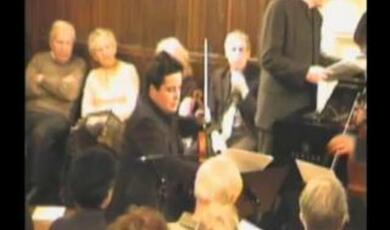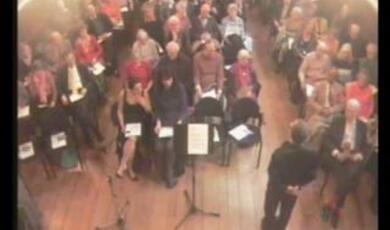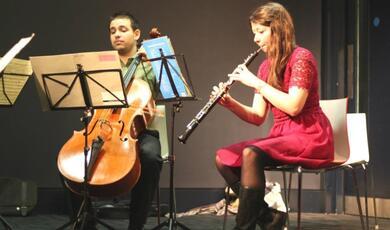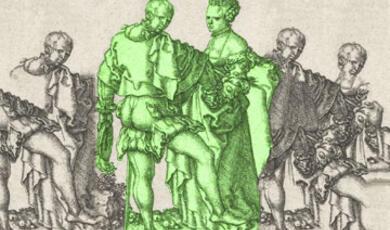Bartok - Quartet No 2
Share
- Details
- Transcript
- Audio
- Downloads
- Extra Reading
One of six lectures devoted to a major work in the string repertory. Each will end with a complete live performance of the work by the Badke Quartet. The lectures will discuss both the historical and musical background of the work in question, and examine any particular performance problems that it raises. The Badke Quartet, formed in 2002, is widely recognised as one of Britain's finest young string quartets. Recipients of the Leverhulme Junior Chamber Music Fellowship at the Royal College of Music from 2003-2005, and the Bulldog Scholarship for String Quartet at Trinity College of Music in 2006, the Badke Quartet has received widespread acclaim for its energetic and vibrant performances.
Download Transcript
BARTÓK QUARTET No 2
Professor Roger Parker
My second Gresham lecture, which will as always end with a complete live performance of the work in question, moves us on 130 years in the history of the string quartet, and takes us to the latest quartet in the entire series, the Second String Quartet of the Hungarian composer Béla Bartók. Our first meeting was taken up with Mozart's 'Dissonance' quartet, a piece written in the 1780s, and thus in the decade when many think the quartet came fully 'of age', emancipating itself from its origins as a cut-price orchestral group; finding a way in which all the instruments could achieve a kind of equality, sharing in the thematic and other working that these four instruments could explore so convincingly. As I explained then, Mozart's contribution to the medium, together with Haydn's and Beethoven's, secured for the string quartet a formidable prestige in the Austro-German composerly world. And thus it was that during the course of the nineteenth century, a century in which an ever-expanding bourgeois audience saw musical works laid out before them in ever-expanding proportions - in which orchestras grew inexorably and boasted a constant accretion of new instrumental colours - the humble string quartet, with its unchanging group of four string soloists and its necessarily modest sonic reach, remained a goal for composers (and audiences) of elevated pretention. No self-respecting German-speaking composer could afford to ignore the medium, nor the process of measuring himself against what was soon called the 'classical style' of his august predecessors
And it was not just in the geographical centre of string quartet writing where this pull was felt. A little more than half way through the nineteenth century, Italy- a country that for two centuries and more had happily immersed itself in its operatic culture, and then exported the product to everywhere else in Europe and beyond - quite suddenly began to feel itself in some kind of musical-cultural backwater. One immediate reaction was to form Società di Quartetto, quartet societies in which the elite of music-lovers could escape from the extrovert cries of Rigoletto or the forlorn laments of Violetta, instead taking pleasure in instrumental music from beyond the Alps. Verdi, holed up in Naples during a revival of Aida in the 1870s, even wrote a string quartet himself. As one might expect, though, it is a piece that from the opening bars gently distances itself from any hint of a Teutonic model. In the wake of their disasters in the Franco-Prussian war, the French also took up German instrumentalism (a cultural capitulation that some saw as matching their military inadequacies), and French string quartets began to appear in numbers. Small wonder, then, that countries more obviously within the Austro-German sphere of political and cultural influence dabbled in quartets throughout the nineteenth century, often (as did the Italians and the French) attempting to inflect that influence with elements of their newly-emerging 'national' consciousness.
One such country was Hungary, Bartók's homeland, and it is to there that we must now turn. Hungary, albeit with a long history and powerful elements of national identity, had long been part of the enormous Hapsburg territories of the Austro-Hungarian Empire. The region was granted partial independence in the 1860s (after an abortive War of Independence in 1848-9), but nationalist rumblings nevertheless continued, and increased as the nineteenth-century drew to a close. Musically, though, Hungary already had an identity and a powerful tradition, albeit one that (in a typical example of the double-bind experienced by many smaller countries at many times) could only make an impression in the larger centres by sticking quite closely to its exotic difference from the centres' norms. This Hungarian musical identity was already in place in the late eighteenth century, when Haydn wrote a piano trio that boasted a so-called 'gypsy rondo', a rondo all'ongarese, full of 'typical' markers of difference such as lively dotted rhythms, augmented seconds, lots of repetition and very simple instrumental combinations: anyone who knows the Haydn movement will immediately call this 'gypsy' music to mind. Hungary's most famous nineteenth-century composer, Franz Liszt, wrote lots of lesser pieces in this style, and even published a book extolling the positive influence of gypsy culture. By the end of the century, travelling players had taken the style across Europe and made it extremely popular in venues both exalted and humble. At the same time, though, Hungary was anxious to compete on the highest level with its Austrian neighbours, establishing for itself a flourishing tradition of orchestral and chamber music performance (mostly of imported Austro-German music, and including the latest, 'advanced' fashions), and in 1875 founding in Budapest the National Hungarian Royal Academy of Music (its title alone says a lot about the national anxiety surrounding the project).
Bartók was a pupil at the Academy towards the end of the nineteenth century, and his musical starting point was entirely predictable. On the one hand, and principally, he took his style from the most advanced German masters, who were Wagner, Mahler and (particularly important to Bartók) Richard Strauss. It's quite clear from Bartok's earliest music that Strauss's taste for orchestral gigantism, and his penchant for the most daring and outlandish tonal (or even atonal) combinations, were fundamental to Bartók's development. But, on the other hand, Bartók was also typical of his Hungarian generation in wanting to express his sense of national identity, and to do this he naturally turned, as had generations before him, to the familiar 'gypsy' style. But a problem soon emerged. While for Liszt and his generation, this 'national' idiom had worked perfectly well, its directness of utterance and popularity meshing well with the more extrovert aspects of the Lisztian project, for Bartók's more esoteric language the meeting was far less congenial. It may even have been that the 'gypsy' style had become simply too popular to function adequately as a tool within Bartók's developing language, driven as it was by a modernist aesthetic in which difficulty was increasingly being prized for its own sake. What was he to do?
Pretty soon, the answer emerged. Soon after the turn of the century, Bartók and others, in particular his friend and fellow composer Zoltán Kodály, began systematically collecting another kind of 'national' music: not the popular, urban style made famous by the gypsies, but a simpler folk idiom, that sung by peasants and others working on the land, far away (he came to think) from the pernicious influence of identity-stripping city culture. During the years from 1905 to 1918, Bartók collected vast amounts of such music, travelling to many parts of the region, including what is now Romania, Bulgaria, Serbia and on one occasion even as far as Biskra in Algeria (of which trip more anon). During the same period he became increasingly intolerant of the 'gypsy' style, expressing his views in published writings that, for us today, deal with 'cultural purity' in alarming ways. Here's an example, from a 1914 publication on Romanian music:
"Gypsies pervert melodies, change their rhythm to 'Gypsy' rhythm, introduce among the people melodies heard in other regions and in the country seats of the gentry - in other words, they contaminate the style of genuine folk music." [cited in Julie Brown, ;Bartók, The Gypsies, and Hybridity', in Georgina Born and David Hesmondhalgh, eds., Western Music and its Others (Berkeley, 2000), 119-42, here 123.]
Perhaps 'alarming' is too vague a word here: this talk of contamination and perversion makes grim reading for us, with its historical legacy in the twentieth century still so central to our thinking; the quote is, if nothing else, a good reminder that Bartók's search for 'authentic' folk music, which is often portrayed as unambiguously positive, had, like so much of modernism, its dark side.
There is no doubt, though, that this new, 'peasant' music brought with it the solution to an impasse. Quite suddenly, Bartók found a way to be both 'modern' and 'national'. The tunes he so diligently collected, often purely vocal, sometimes with folk violin or other instruments, all in a style than had played no important part in his middle-class upbringing, furnished exactly the material he needed. It had none of the harmonic sophistication of the now-despised 'gypsy' music, but instead used simple rhythms in complex arrangements, showed an unusual concentration on what would in classical terms be though 'angular' intervals, particularly the perfect fourth, and a tendency towards modal rather than tonal organization. Sometimes Bartók quoted literally from such material, giving his music what we might call 'local colour'; but more often he took the more radical move of adapting it freely to his developing style, absorbing and building on its potentially disruptive elements and so moving ever further (in rhythm and harmonic orientation) from his late-Romantic beginnings.
There is no better way to explore this process than through Bartók's six string quartets, a series of compositions that can describe the progress of his musical career. The first, written around 1908-9 still shows the lingering influence of Strauss and Mahler, albeit with incursions of the new, 'peasant' melodies he was collecting. The second, written some ten years later, shows a thorough absorption of the new style. Numbers three, four and five (written in the 1920s and early 30s) are among the most radical music he would write, and are fierce challenges for both the performer and listener; the sixth and last, written in 1939, shows the retreat into a gentler, more contemplative style that characterizes his last years. Why, one might ask, did he devote such energies to this 'classical' medium? Clearly one reason was precisely its noble lineage mentioned earlier: in spite of their modernist credentials, twentieth-century composers still felt a need to measure themselves against the past by taking up the old forms and ensembles. But in Bartok's case there was obviously something more. The solo strings could also, for him, take on the guise of 'folk' instruments, allowing him to recreate some of the simple energy that he heard in his ethnographical wanderings. It is the confluence of these two factors, of (adopted) Western elitism and (adopted) Hungarian roots, that make Bartok's string quartets so distinctive: on the one hand, the somewhat austere, 'classical' working out of musical problems for which the repertoire is so famous, what the Germans call the 'thematische Arbeit' (thematic working); on the other the simple energy and unsophisticated instrumental sounds of folk music.
And so to the Second String Quartet, which was written during World War I (Bartók avoided army service because of ill health, and spent much of the war collecting folk music). It is in three movements, each lasting around 8-9 minutes, the first and last on the slow side, with the middle movement a driving Allegro.
The first movement, marked Moderato at the start but (like most of Bartók's music) often changing in tempo, is in some ways the most conventional, and certainly the most reminiscent of the his earliest style. Some commentators, following a remark by the composer, have wanted to suggest that it is in sonata form, complete with contrasting subjects and a development section; that sketches a clear link back to the worlds of Mozart and Beethoven, but it risks making too schematic a movement that is above all freely evolving, moving from section to section in a manner best described as rhapsodic. The opening sets the tone, both in terms of thematic material and the way that material is treated. The middle two instruments (second violin and viola) offer a hesitant accompaniment, one that starts on a dissonant minor second; the cello sustains notes, as if an anchor of some kind; and the first violin introduces the main thematic material, which is Bartókian in its improvisatory rhythmic complexity and its insistent use of perfect fourths and semitones ,and is a key collection of intervals throughout the quartet. This opening texture gradually increases in intensity; the first violin becomes fixed on the note g, which it explores in four octaves, and finally all the instruments come together on a wide-spaced chord. All this takes no more than a minute, after which the process, the gradual build-up, starts again. Let's immediately listen to that one-minute opening, to get a taste of the musical atmosphere, and get the measure of that critically important opening theme.
PLAY MOVEMENT 1 (TRACK 4, START TO 1:00). BARTOK STRING QUARTET NO 2, PLAYED BY THE ALBAN BERG QUARTET.
That building to a climax, the sense in which the working-out of the opening theme gradually becomes more intense, and the exchange between the instruments more elaborate, until eventually a climax occurs in which all the four instruments come together in some grand statement, only then to give way to a further build-up: all this is repeated several times in the movement and is its principal structuring force. The only significant alternative is a more lyrical and more obviously folk-like melody, which occurs twice and gives some kind of respite from the otherwise rather austere 'thematic working'. I'll play the first appearance of this new theme, taking us back a little before it, to the second grand climax and static chords, and then through to the theme, which has a very distinctive voicing (violin and viola in unison, but two octaves apart) and drone-like open fifths on the cello and second violin.
PLAY MOVEMENT 1 (TRACK 4, 2:40-3:25).
The second movement, a kind of loose rondo, is marked Allegro molto capriccioso and is almost throughout an essay in driving rhythms and extreme virtuosity (capriccioso it may have sounded to Bartók, but for the players it's anything but). You'll recall I mentioned near the start that the composer's ethnomusicological field trips took him as far a-field as north Africa, and some of the music he recorded there, made by the Berber people, is recalled in this movement, in which driving, drone-like rhythms accompany melodies of very restricted range and characteristic ornamentation. As many have said before, this style of Bartókian music is impossible to discuss according to the language of conventional tonality, it is based not 'in' keys but rather 'on' notes: notes that are frantically repeated so that they become a kind of anchor. Again, to give you a hint of the sound-world, let's hear the first few moments. After a brief, motivic intro, with prominent tritones, the second violin supplies the drone, repeating an octave D no fewer than 238 times (yes, heroically I counted them for your instruction), with pizzicatos on the viola that sound like slaps on a drum. Above and then below sounds a distinctly exotic, Arab-sounding melody, complete with ornaments.
PLAY MOVEMENT 2 (TRACK 5, START to 0:37).
There are a few moments of relaxation during the movement, but not many: the most prominent is a curiously lyrical section at about mid-way, which has a high violin melody and pizzicato cello. But those savage repeated rhythms keep returning. The final pages are a tour-de-force, a Prestissimo that is marked to be played pianissimo (with mutes) and at the insane tempo of dotted minim=200, a speed so demanding that most quartets simply ignore it and do their (slower) best. What does this endingmean, one wonders? A desert storm among the Berbers? An infernal dance of death? The players will certainly be too busy to wonder, but we in the audience can speculate at our leisure.
The third movement, marked simply Lento, is fragmentary, contemplative and (to my ears, at least) suffused with resignation and perhaps melancholy. I struggled quite a bit, musicologist that I am, to find a suitable formal template, but gave up, and was then relieved when I read that Bartók himself had described it as 'difficult to define'. The quartet texture is full of double-stopped effects, sometimes ones building to quite complex chords, mostly constructed on fourths rather than thirds. From time to time a resigned, falling melody appears in the first violin, and from time to time the entire ensemble seems to make repeated attempts at more vigorous closure; but to no avail. The movement begins as it ends, with fragmented wisps of sound. Applause will seem like an intrusion, but don't hold it back for that reason.
Bartók has suffered and enjoyed changing fortunes over the years. Though it was from early on recognized that his was one of the most distinctive voices in modernist composition, his reputation was damaged somewhat by being linked too easily to that of Stravinsky, whose music was at only one moment (an early one) in any way similar to Bartók's. (Incidentally, I recall reading some time ago a wonderful diatribe against this critical habit, now mercifully behind us, of linking composers in pairs - Bruckner and Mahler, Donizetti and Bellini, Bartok and Stravinsky. The author of the diatribe wondered aloud why people feel the need to configure composers in this way, as if they were, as he charmingly put it, 'partners in high-class haberdashery firms'. Perhaps there's a thesis in that for some sociologist of the future.) But, at least since the end of World War II, Bartók's string quartets have been at the centre of the medium's twentieth-century repertory.
Famously, these quartets explore, and make demands on, their four instrumentalists in ways unknown (indeed, unimaginable) in previous times. You'll hear plenty of that in a moment or two. It is interesting, though, that while in the 1950s and 1960s the Bartók quartets were regarded as among the most austere and demanding imaginable, these days they have begun to seem more mainstream and approachable. Of course, this was always supposed to happen to modernist music: when I was a music student forty years ago, we were endlessly assured that contemporary music which seemed to us incomprehensible would, with repeated listening and industrial-strength doses of aural training, sound as limpid and predictable as Eine kleine Nachtmusik. Well, I'm here to tell you that we tried, even tried hard, and it didn't. A work like Webern's Op. 27 sounds just as strange now as it did forty or, for that matter, eighty years ago, and my guess is that it will sound strange forever. But Bartók, even the relatively austere Bartók of the string quartets, is different. Younger players such as those we will hear today come to the music without preconceptions, without thinking that it must be impenetrable and harsh; and as a result they make more sense of it, or at least a different kind of sense: while not ignoring its challenges, and while remaining respectful of its demands, they connect it more easily to its nineteenth-century roots, and so (I think) help us understand it more clearly.
And now, to test out that statement, I can introduce the Badke Quartet. Since we last saw and heard them, they have, as musicians do, travelled far and wide, giving quartet concerts in Cardiff, London, Manchester and Cologne, as well as pursuing their separate careers elsewhere. One of them (I'll leave you to guess which, flew back from Spain this very morning. Bartók's fearsome second quartet awaits them. So join me in welcoming the Badke Quartet: Heather Badke, first violin, Emma Parker, second violin, Matthew Jones, viola, and Jonathan Byers, cello.
BADKE QUARTET PLAYS BARTOK, SECOND STRING QUARTET
©Professor Roger Parker, Gresham College, 4 December 2007
Part of:
This event was on Tue, 04 Dec 2007
Support Gresham
Gresham College has offered an outstanding education to the public free of charge for over 400 years. Today, Gresham plays an important role in fostering a love of learning and a greater understanding of ourselves and the world around us. Your donation will help to widen our reach and to broaden our audience, allowing more people to benefit from a high-quality education from some of the brightest minds.


 Login
Login
